Tags :: War

Of Animals and Men: Extraordinary story, mixed presentation (2019)
Of Animals and Men tells a story of light shining in the darkness — but the preciousness of the light depends in a way on the prevalence of the darkness, and, in that connection, it must not be forgotten that the Nazis were not the sole agents of darkness.
![Jojo Rabbit [video]](/uploads/articles/jojorabbit.jpeg)
Jojo Rabbit [video] (2019)
Taika Waititi has directed some cracking comedies, but can even he make Hitler funny?

A Hidden Life (2019)
An ecstatic, anguished three-hour cinematic hymn, Terrence Malick’s A Hidden Life sings the life and death of Blessed Franz Jägerstätter in asymmetrical binary form, in contrasting theologies — theology and anti-theology — of the body.

Tolkien (2019)
“One of my strongest opinions,” J.R.R. Tolkien wrote in a 1971 letter, “is that investigation of an author’s biography … is an entirely vain and false approach to his works.”
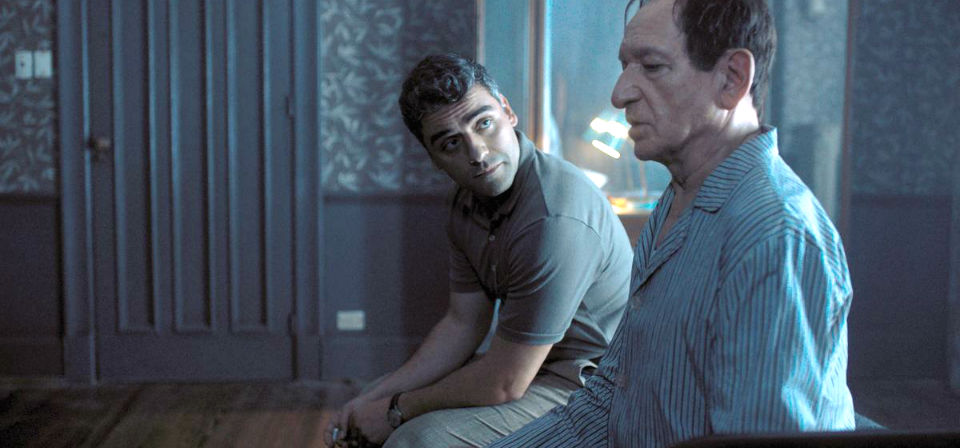
Operation Finale (2018)
It was the experience of reporting in Jerusalem on the 1961 Adolf Eichmann trial for The New Yorker that led the philosopher Hannah Arendt to coin her famous phrase “the banality of evil.”
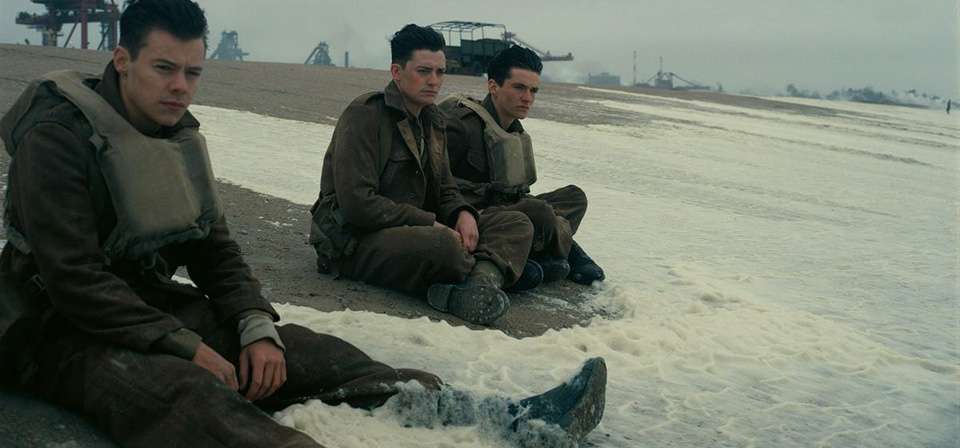
Dunkirk (2017)
Dunkirk is the first film Christopher Nolan has made that feels bigger than the director’s preoccupations and obsessions.

Wonder Woman (2017)
Movies like Man of Steel and The Lone Ranger misunderstand and besmirch their iconic heroes. This movie understands and reveres its protagonist. That’s worth a lot, especially today.
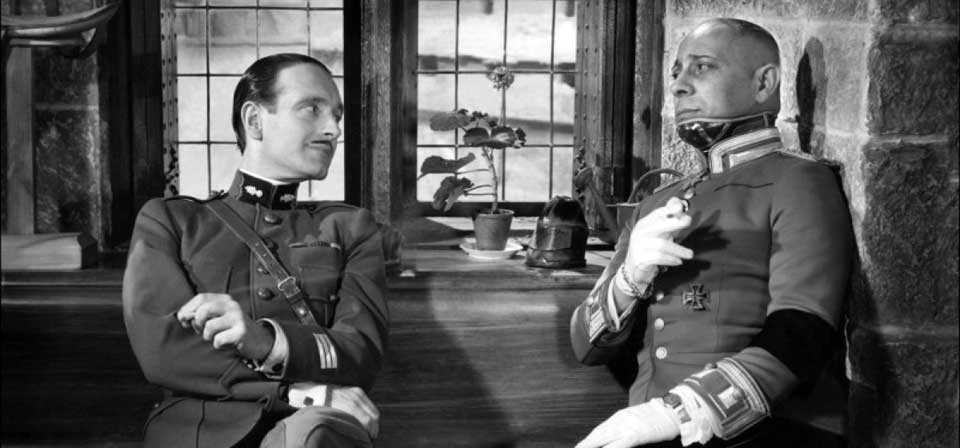
Grand Illusion (1937)
Asked what he was trying to do in Rules, Renoir is reported to have said, “I don’t care.” With Grand Illusion, it may not be much easier to say what he’s trying to accomplish, but there is no doubt that he cares.
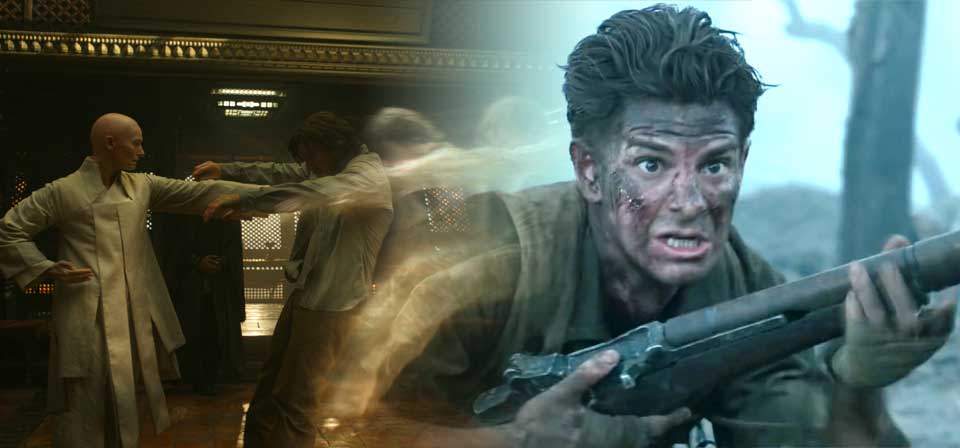
Doctor Strange and Hacksaw Ridge: Breaking rules and the greater good
In each of their latest films, the battle against a threatening power raises questions about which principles the protagonist should or shouldn’t compromise in order to protect his world — questions that aren’t necessarily clearly answered by the end of the film.
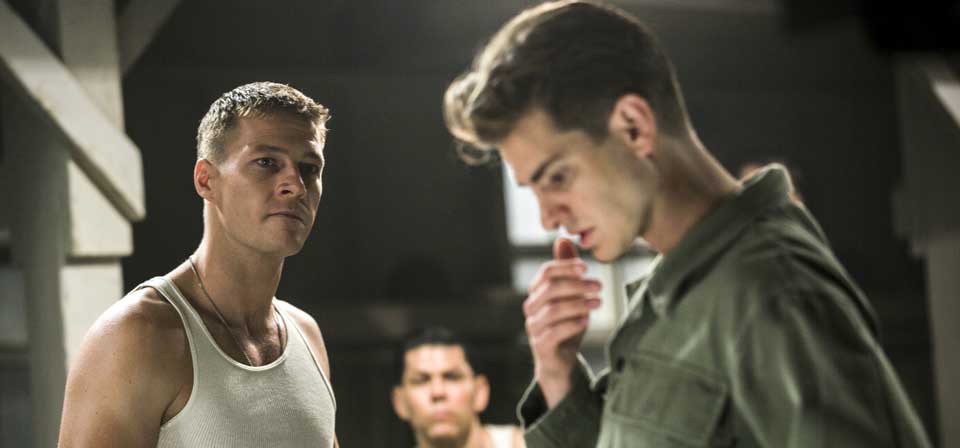
Hacksaw Ridge (2016)
Gibson crafts a resolutely traditional exercise in Hollywood mythmaking: a tale of a man who stoically endures accusations of cowardice before being vindicated as the bravest of all, a man of integrity who stands by his unpopular principles regardless of the consequences; a pious man whose sincere faith eventually wins the respect and admiration of his less devout comrades.
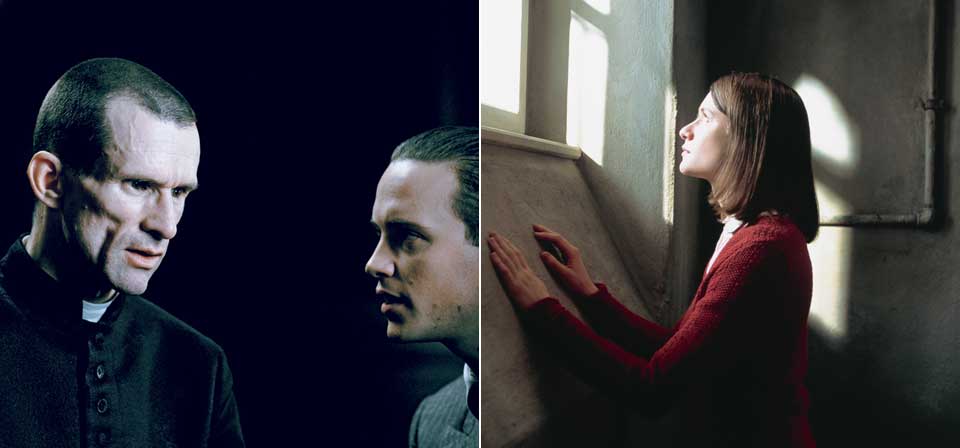
The priest, the student, and the swastika
Both films revolve around a number of tense cat-and-mouse interviews between the believing protagonist and a shrewd Nazi antagonist … The interviews in both films are a clash of worldviews.
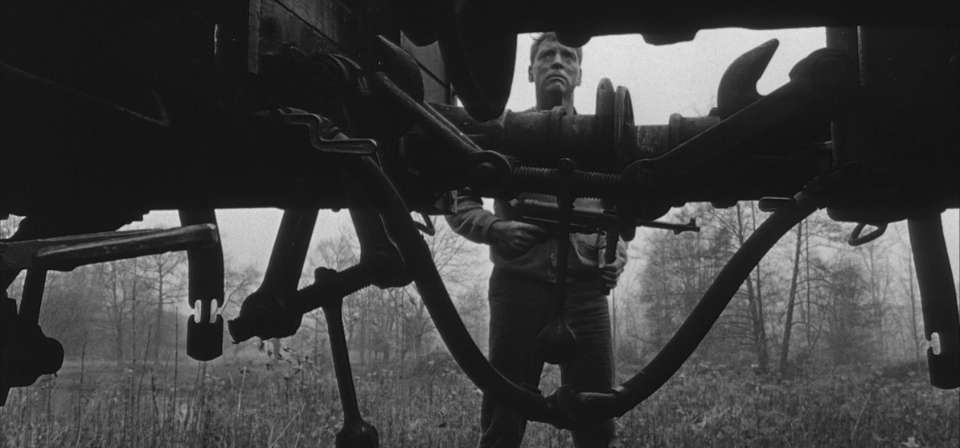
The Train: When is art worth dying for?
Are manmade things ever worth dying for? How do you weigh the value of art or artifacts against the value of human life? On the one hand, human life is sacred; things are just things. On the other, the cultural heritage of a people is an irreplaceable treasure that belongs not only to the whole community, but to all future generations.

Unbroken (2014)
Angelina Jolie’s Unbroken is an honorable movie about an inspiring true story. It is impeccably crafted, with a raft of remarkably talented people behind it. It is a celebration of the old-fashioned virtues of duty, grit, fortitude and honor. In the end, it tips its hat to faith, forgiveness and reconciliation. The film I just described is a film that, on paper, I should love.
A haunting film about the “martyr of Auschwitz”
Nearly two decades before his Oscar-winning role as a Jew-hunting Nazi in Quentin Tarantino’s lurid WWII fantasy Inglourious Basterds, Christoph Waltz played an Auschwitz survivor whose escape is linked to the death of one of Auschwitz’s most celebrated victims, St. Maximilian Kolbe.
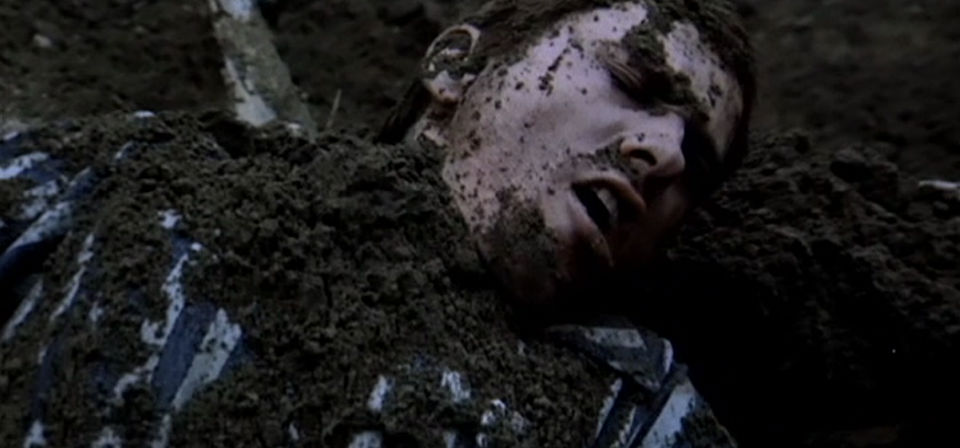
Life for Life: Maximilian Kolbe, martyr of Auschwitz (1991)
Two great mysteries hover over the cardinal moment in St. Maximilian Kolbe’s life, a quiet exchange of words with the deputy camp commander at Auschwitz-Birkenau heard by few and lasting probably less than a minute.
Hercules [video] (2014)
A question I couldn’t get to in 60 seconds: What’s the real story with the creepy, green spaced-out tribal warriors? Can anyone explain that?
Edge of Tomorrow [video] (2014)
I’m a sucker for a good time-bending movie. This is a good time-bending movie.
Mrs. Miniver (1942)
Jan Struther, who created Mrs. Miniver for a series of newspaper columns later published in book form, was also the author of a number of Anglican hymns, including “Lord of All Hopefulness” (a staple in our family’s evening devotions). That biographical detail puts an interesting light on the religious elements in William Wyler’s Oscar-winning adaptation, Mrs. Miniver.
For Greater Glory (2012)
For Greater Glory tells a story of religious freedom and oppression that is far too little known, and that would be important and worthwhile at any time, but is strikingly apropos in our cultural moment.
War Horse (2011)
In War Horse Spielberg harkens back to an earlier cinematic age, creating something more like a Golden Age Hollywood epic than any film I’ve seen in years, the one other notable example being Baz Luhrmann’s Australia.
Captain America: The First Avenger (2011)
After a rash of immature, bad-boy cinematic superheroes for whom responsibility is a bigger challenge than taking down supervillains — think Iron Man, Thor and Green Lantern — a hero for whom decency, humility and self-sacrifice come naturally is a breath of fresh air.
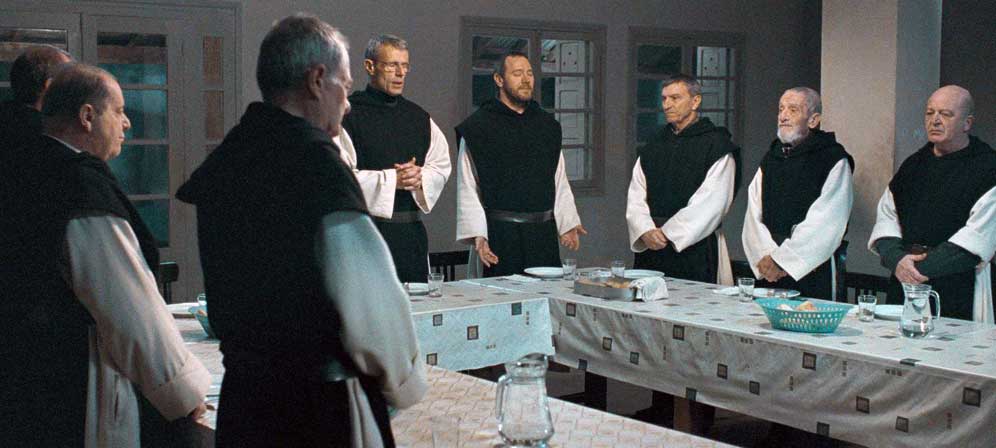
Of Gods and Men (2010)
Xavier Beauvois’ sublime Of Gods and Men is that almost unheard-of film that you do not judge—it judges you. To one degree or another it defies every attempt to put it in a box, to reduce its challenge to a political or pious ideological stance to be affirmed or critiqued.
Night Train to Munich (1940)
If the two British twits on the titular train in Carol Reed’s overlooked, entertaining Night Train to Munich seem to have wandered in from another movie, it’s because they have.
The African Queen (1951)
Crocodiles, tsetse flies, mechanical difficulties, African rains and burning sun, sickness, an erratic helmer — all these and more plagued the shooting of The African Queen, no less than the onscreen journey of the African Queen down the Ulonga–Bora River during the first World War.
Green Zone (2010)
It’s tidy, comforting revisionism, like sending Rambo back into Vietnam so we can win this time. Instead of a morass in which the search for WMDs simply peters out, we get the closure of a smoking gun, a scapegoat whom Miller can buttonhole with righteous fury like Harrison Ford lacing into the president at the end of Clear and Present Danger.
Roma, città aperta [Open City] (1945)
Developed in Rome during the Nazi occupation, shot in the Eternal City shortly after the Nazi withdrawal, Roberto Rossellini’s Rome Open City stunned audiences the world over who saw in it an unmediated authenticity more evocative of the documentary quality of wartime newsreels than of the artificiality of earlier, more conventional WWII dramas.
The Hiding Place (1975)
Thirty years after its original release, The Hiding Place remains one of the best films ever produced by a faith-based group (Billy Graham’s World Wide Pictures).
Miracle at St. Anna (2008)
It’s a slightly heavy-handed misstep in a film that runs confidently though unevenly over a mountain of material, stepping right more often than it steps wrong over its 160 minutes. As a contribution and challenge to the World War II genre, Miracle at St. Anna compares reasonably well to most Hollywood efforts. As is often the case, Lee seems to relish biting off more than he can chew, and the ambition and scope of this effort is worth the bits that don’t quite fit.
Fires on the Plain (1959)
Unlike Ichikawa’s The Burmese Harp, which preserved the overt Buddhist milieu of the original book, the film version of Fires on the Plain eliminates the religious, in this case Christian, dimension of its source material. While both films may be called “anti-war” or “pacifist,” The Burmese Harp has a larger humanistic perspective on the riddle of suffering and the place of human values amid inhuman circumstances that goes far beyond a simple deploring of war. Fires on the Plain doesn’t transcend the “war is hell” genre in the same way, though the aesthetic rigor of its descent into hell is about as exacting and definitive as such a thing can be.
Beyond the Gates (2005)
Beyond the Gates is most worth seeing for its uncompromising portrait of a more representative episode in the Rwandan genocide than the events depicted in Hotel Rwanda. At the same time, it offers little insight into the Hutu or Tutsi experience.
Green for Danger (1946)
Sidney Gilliat’s Green For Danger is an overlooked gem that transplants the trappings of a droll British murder mystery in an unexpected WWII context, with Nazi air raids and an emergency wartime hospital set up in a rural manor home outside London.
Flags of Our Fathers (2006)
Even today, the iconic, Pulitzer-winning 1945 photograph of five US Marines and a Navy corpman raising the American flag on Iwo Jima retains an extraordinary power. Like a Norman Rockwell painting, Joe Rosenthal’s famous photograph tells a story, creates a mood, evokes an ethos, and elicits a metaphorical or allegorical response, all at the same time.
Sometimes in April (2005)
Compared to the theatrically released Hotel Rwanda, Sometimes in April is grimmer, less focused, and more uncompromising. Both films focus on a connected, successful Hutu family man with a Tutsi wife and a number of children, but this man’s story, in which the past of 1994 and the present are intercut, is more ambiguous and tragic.
Judgment at Nuremberg (1961)
Downbeat, intelligent, and compelling, the film is brilliantly constructed and acted, bringing lucid, forceful moral argumentation as well as emotional sympathy to both sides without tipping its hand until the powerful climax. Tribunal justice Dan Hayward (Spencer Tracy) is the ideal foil for the film’s rhetoric: a self-deprecating, folksy American circuit court judge with no ax to grind and a winsome appreciation for his own obscurity, knowing he’s sitting in judgment of defendants no one else wanted to judge.
The Ninth Day (2004)
The Ninth Day digs beyond rote charges of ecclesiastical complicity and counter-arguments to explore various levels of resistance and protest — and their consequences.
Star Wars: Episode II - Attack of the Clones (2002)
It doesn’t help that this is now the second Star Wars movie in a row in which the "wars" alluded to in the series title are still basically in the future (one climactic skirmish aside). Lucas should never have gotten bogged down in political debate, let alone given two whole films of it.
Star Wars: Episode I - The Phantom Menace (1999)
It’s not just that the banter and camaraderie of Luke and Han and Leia was so much more fun than the often wearying interactions of Anakin and Amidala and young Obi-Wan — though that’s part of it. More importantly, the stories themselves largely lack the strong center of good versus evil that was the heart of the original trilogy.
Star Wars: Episode III – Revenge of the Sith (2005)
Crippled as he is by the decisions of the first two films, Lucas still manages to invest the final chapter of his sprawling space opera with the grandly operatic spirit of the original trilogy. It’s still cornball, yes, and with all the usual weaknesses. But Episode III at last has heart.
Star Wars [Episode IV – A New Hope] (1977)
An orphaned hero. An imprisoned princess. A wise old hermit. A magic sword. A fearsome dark lord. Such conventions are the stuff of myth and romance — yet, inexplicably, the first Hollywood film to give these mythic archetypes their due was not some Arthurian romance or epic costume drama.
Star Wars: Episode VI – Return of the Jedi (1983)
Thematically, where the first Star Wars movie offered a simple vision of good triumphing over evil, and The Empire Strikes Back expressed the problem of evil and the necessity of sacrifice, Return of the Jedi tackles nothing less than resisting temptation, compassion for enemies, and the possibility of redemption for even the most evil.
Kingdom of Heaven (2005)
The story, in fact, could largely be described as the failure of moderate Christians to restrain fanatical Christians from oppressing innocent Muslims, thereby provoking justifiable Muslim retaliation against the Christians, both fanatics and otherwise. Yet Saladin himself is not an uncomplicated noble figure. As he prepares to lay siege to Jerusalem, he explicitly rejects the possibility of showing mercy, relenting only when Balian fights him to a standstill.
The Lord of the Rings: The Return of the King (2003)
It’s hard to overstate the soaring achievement of Peter Jackson and company in The Return of the King, the third and final chapter of their historic adaptation of The Lord of the Rings. To call it the grandest spectacle ever filmed is no exaggeration; it may also be the most satisfying third act of any film trilogy, completing what can now be regarded as possibly the best realized cinematic trilogy of all time.
Hotel Rwanda (2004)
Not in the now-distant mythology of World War II, with the iconic evil of the Nazi regime pitted against the warriors of the Greatest Generation, or even the likes of larger-than-life Oskar Schindler. Here is a horror within living memory of nearly anyone old enough to watch the film, a holocaust without the cover of a massive bureaucratic machine or industrialized, sanitized gas chambers.
Napoléon (1927)
It is an extraordinary artifact from another culture, a mythology as remarkable and as alien as the Epic of Gilgamesh or the Icelandic Eddas. For students of silent film, this is one of those indispensable landmarks you must see before you die.
Stalag 17 (1953)
Grimly hilarious, subversive and defiant, rough around the edges, and more than a little sad, Billy Wilder’s Stalag 17 may have been the inspiration for TV’s “Hogan’s Heroes,” but this is no campy farce.

Francesco (1989)
How is it, then, that Cavani succeeds in making Francesco neither an attractive hero of secular virtues nor an off-putting champion of spiritual ones? How does she come to make her protagonist off-putting without being otherworldly, earthbound without being attractive?
Au Revoir Les Enfants (1987)
Au Revoir Les Enfants, Louis Malle’s semi-autobiographical film about life in a Catholic boarding school for boys in Nazi-occupied France, has been called an elegy of innocence lost, though in fact the youthful characters are never truly innocent, only clueless, and what they lose is not innocence but something more elusive.
The Burmese Harp (1956)
Kon Ichikawa’s deeply humane, spiritually resonant masterpiece The Burmese Harp is routinely but reductionistically described as “pacifist” or “anti-war,” though in fact war is merely the occasion for the story’s theme, not the theme itself. That theme is nothing less than the intractable mystery of suffering and evil, an affirmation of spiritual values, and the challenge to live humanely in evil circumstances.
I Am David (2004)
Why has young David (Ben Tibber) spent most of his short life in a Bulgarian labor camp? He doesn’t know, and neither do we. As the title suggests, I Am David wants us to experience David’s story through the eyes of a young boy who has never known anything but this camp, except for a few flashbulb memories of a fair-haired woman he knew in another life.

Andrei Rublev (1969)
The notion of art as a "religious experience" is sometimes bandied about too freely. Tarkovsky is one of a handful of filmmakers for whom this ideal was no cheap or desanctified metaphor, but literal truth.
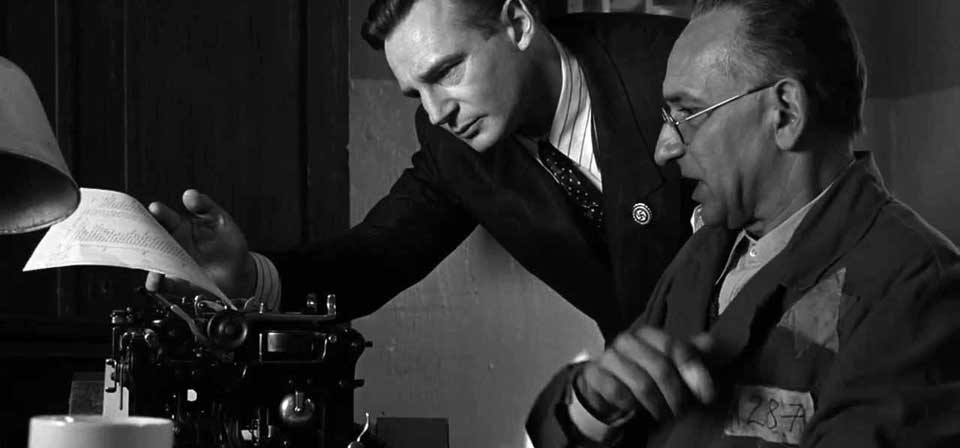
Schindler’s List (1993)
From the armbands to the ghettos, from forced labor to extermination camps and beyond, Schindler’s List covers the successive historical stages of the Final Solution more comprehensively than any other popular film had at the time, or has since. That, in part, is its great achievement — and, for many of its critics, its enduring stigma.
The Scarlet and the Black (1983)
Riveting and edifying, this WWII drama stars Gregory Peck as Msgr. Hugh O’Flaherty, a plain-speaking, straight-dealing Irish priest who boldly aids enemies of the Third Reich under the watchful eye of Christopher Plummer’s Nazi Lt. Col. Herbert Kappler. Their cat-and-mouse game is thrilling and great fun, and culminates in a startling showdown in a very significant setting.
Vanity Fair (2004)
Mira Nair’s Vanity Fair is many things, but a howl to a congregation of fools isn’t one of them.
Intolerance (1916)
Intolerance is a grandiose composite epic, interweaving four separate morality plays from different eras and settings, from 20th-century America (the "Modern Story") to Old Testament times (the "Babylonian Story"). Rounding out the four are a brief survey of the life and death of Christ (the "Galilean Story" [sic; most of it is set in Judea, not Galilee]) and events from the 16th-century persecution and massacre of Huguenot Protestants under the Medicis, including the St. Bartholomew’s Day Massacre (the "French Story").
The Birth of a Nation (1915)
Yet the film’s second half, with its outrageously racist stereotypes and view of the post-war reconstruction, incited protest even in its own day, and has only become more disturbing over time. Had Griffith concluded the film at the close of Part I with the stunning depiction of Lincoln’s assassination, controversy over the film would be a mere footnote. But there’s no ignoring the film’s final act, which, following the source novel and play The Clansmen by white supremacist Thomas F. Dixon Jr., celebrates the founding of the original Ku Klux Klan, climaxing with the Klan heroically subjugating out-of-control black rioters and restoring white control.
Bonhoeffer (2003)
Bonhoeffer notes the seeming oddity of the prominence of its subject, whose celebrity today may seem from one perspective disproportionate to his importance as a theologian and ecumenist and certainly as a relatively unimportant conspirator in a failed assassination attempt. Yet as another 20th-century saint once said, “We are called upon not to be successful, but to be faithful.” Bonhoeffer was faithful to the giving of his own life, which he did as willingly and serenely as any martyr.
Secret Lives: Hidden Children and Their Rescuers During WWII (2002)
Secret Lives: Hidden Children and Their Rescuers During WWII, directed by Oscar-winning documentarian Aviva Slesin, who is herself a childhood Holocaust survivor hidden from the Nazis by a Lithuanian Christian family, is an uplifting, shattering, heartfelt tribute to the Gentile families across Europe from Poland to the Netherlands who risked their own lives to take in and hide Jewish children in their homes. Based entirely on interviews with the Jewish survivors and with their rescuers and parents, Secret Lives explores the devastating impact of the Holocaust even on those who survived it, as well as the nobility and heroism displayed by many during one of the darkest chapters of human history.
Gandhi (1982)
Overshadowing even Ben Kingsley’s astonishing, transcendent performance in his first major screen role is a larger, more formidable presence: that of Mohandas K. Gandhi himself.
Troy (2004)
So long is the shadow of The Iliad over the history of Western literature that before considering the merits of Wolfgang Petersen’s Troy it may be helpful to recall that the story of the Trojan War was not only likely told by poets long before Homer, certainly after Homer it has been retold and reworked by numerous poets and writers, including Virgil, Euripides, Quintus, Chaucer, and Shakespeare.
The Alamo (2004)
(Written by Jimmy Akin) This is the story of a civil war. Not the one you’re familiar with, but one that occurred a quarter century earlier. In this civil war, the North seceded from the South, and since the secessionists won, it’s not called a civil war but a revolution: the Texas Revolution.
The General (1927)
Arguably the greatest of Buster Keaton’s silent comedies, The General begins with a single, brilliantly sustained premise and works it into an engaging story that combines edge-of-your-seat excitement, stunningly conceived stunts and sight gags, spectacular set pieces, touching sentiment, and a rousing finale.
Heaven Knows, Mr. Allison (1957)
Like director John Huston’s similarly themed The African Queen, the film finds conflict mixed with romantic tension in a tale of a demure religious woman thrown together with a rugged male loner. Here, though, the complicating factor is not fastidiousness on the part of the religious woman, but the woman’s vocation.
One Man’s Hero (1999)
Who is right? The issues are complex, and historians and faithful Catholics disagree (see related article). One Man’s Hero is sympathetic to the St. Pats and critical of American "Manifest Destiny" expansionism and anti-Catholicism.
Father Goose (1964)
Cary Grant cheerfully plays against a lifetime of typecasting in this modestly entertaining romantic comedy with comic echoes of The African Queen and Heaven Knows, Mr. Allison, directed by Ralph Nelson (The Lilies of the Field).
The Lord of the Rings (1978)
Notwithstanding this and other weaknesses, this Lord of the Rings is in some respects quite impressive and remains worth a look, especially for Tolkien fans, and perhaps younger viewers not quite old enough for Peter Jackson’s more intense adaptation — though even the Bakshi is darker and more intense than most cartoons. (Younger viewers might also be interested in the animated Rankin-Bass versions of The Hobbit and The Return of the King.)
Lawrence of Arabia (1962)
One of the cinema’s grandest spectacles, Lawrence of Arabia is at turns exhilarating, devastating, and puzzling as it ponders the mystery of a man who was a mystery to himself.
The Lord of the Rings: The Two Towers (2002)
From the very first sequence of Peter Jackson’s The Two Towers — a bravura opening that stunningly recalls and continues a central sequence from The Fellowship of the Ring — we feel that we’re in good hands. It’s a promise the subsequent three hours deliver on imperfectly.

The Lord of the Rings: The Fellowship of the Ring (2001)
There can be no more fitting tribute to Peter Jackson’s The Fellowship of the Ring than to apply to it the words with which C. S. Lewis acclaimed the original book when Tolkien first wrote it: “Here are beauties that pierce like swords or burn like cold iron; here is a [film] that will break your heart.”

Master and Commander: The Far Side of the World (2003)
Like a cannon blast across the bows, Peter Weir’s Master and Commander: The Far Side of the World is a thunderous, almost defiant declaration heralding the arrival of a force to be reckoned with.
Duck Soup (1933)
Probably the greatest and funniest film from one of the cinema’s funniest acts, Duck Soup is as absurdly nonsensical as comedy can be and still be about something.
Grave of the Fireflies (1988)
A haunting, harrowing war movie, an emotionally devastating character study, and an extraordinarily restrained example of animé or Japanese animation, Grave of the Fireflies is a unique and unforgettable masterpiece.
Friendly Persuasion (1956)
Scenes of silent, unstructured Quaker meetings are contrasted without comment or judgment to the boisterous singing of the local Methodist church, but — despite Eliza’s best efforts — the film is largely an account of the compromises the Birdwells are and aren’t willing to make. Their principles are repeatedly put to the test, at the local fair, on the Sunday morning ride to the meeting house as a smug neighbor blows past Jess’s slow horse every week, and so on. One of the best vignettes concerns an impasse between Jess and Eliza over the shocking purchase of an organ, and the delightful way the conflict is finally resolved.
The Gathering Storm (2002)
Although the title is taken from the first volume of Churchill’s history of the war, The Gathering Storm is as much about Churchill’s personal life as his political trajectory — sometimes to excess, since the political side is usually more interesting. The warts-and-all portrait includes his loving but sometimes strained marriage to Clementina (Vanessa Redgrave), his financial troubles and hard drinking habits, his melancholia or "black dog," his amateur painting and bricklaying, and his habit of absent-mindedly losing himself in rehearsing or dictating speeches while in the bathtub or dressing and undressing.
My Favorite Blonde (1942)
One of Bob Hope’s best comic-thriller vehicles, My Favorite Blonde benefits from its semi-serious spy-thriller ambiance, tolerably cogent plot, scene-stealing penguin, and above all one of the more human, less caricatured, less one-dimensionally narcissistic characters in Hope’s movie oeuvre.
Casablanca (1942)
The result of this somewhat haphazard collaboration is a breathtaking creative synergy, a perfect storm in which everything happened to come together with magical rightness. The sparkling script balances wittily cynical dialogue, weepy sentimentalism and clear-eyed idealism. The characters that matter are credibly, even seriously flawed, yet remain deeply sympathetic and open to redemption. The tightly crafted plot is at once intricate and elegant, at turns rollicking and stirring, and the snappy storytelling doesn’t come at the expense of rich, moody atmosphere. The top-notch cast are at the top of their games, and the timeless score accents a classic wartime melodrama that hasn’t lost a thing as time goes by.
Sahara (1943)
One of the best WWII-era WWII movies, Sahara is a thoroughly entertaining war actioner starring Humphrey Bogart as a tough American sergeant commanding a tank crew in the Libyan desert.
Gods and Generals (2002)
(Written by Robert Jackson) Gods and Generals is an extremely one-sided account of the first half of the Civil War.
The Pianist (2002)
Now, almost ten years later, Polanski has finally faced his demons and made a film of almost ferocious objectivity — a film devoid of even the smell of polemicism, sentimentality, melodrama, or cliché. Not a celebration of the human spirit, resisting both deceptive moral uplift and despairing moral nihilism, neither demonizing the Germans nor lionizing the Jews, The Pianist is a work of exquisite restraint. Any misstep might have resulted in reducing the horror of genocide to a prop in a morality-play, but Polanski surefootedly avoids every trap and temptation in his path.
Tears of the Sun (2003)
Tears of the Sun (Columbia) presents a picture of American military presence abroad that is simultaneously appealing and troubling: superheroic Navy SEALs going about doing good, rescuing refugees, battling evil ethnic-cleansing rebels, and earning the gratitude and goodwill of indigenous peoples, all in defiance of their orders and American foreign policy.
The Four Feathers (2002)
Monte Cristo is also the only one of the three that knows it’s essentially a comic-book movie, and has appropriately modest aspirations. Like Road to Perdition, The Four Feathers feels like a weighty epic, though neither movie weighs in at more than about two hours, and neither really knows what it’s about.
Star Wars: Episode V – The Empire Strikes Back (1980)
The Empire Strikes Back is the backbone of the Star Wars saga. It takes the story and themes of the first film into deeper waters.
Star Wars [Episode IV – A New Hope] (1977)
(Review by Jimmy Akin) Like earlier pulp films, Star Wars draws on mythic and fairy-tale archetypes: a young orphan-hero; a mysterious wizard-mentor; a fearsome dark lord; a magical sword; a princess held prisoner; a gallant rescue mission. Yet on a deeper level, Star Wars is more convincing as a myth or fairy tale in its own right.
Behind Enemy Lines (2001)
Saving Private Ryan (1998)
Steven Spielberg’s harrowing WWII drama opens with a horrifying recreation of the D-Day invasion of Normandy Beach that has been called the most realistic war sequence ever shot.
Pearl Harbor (2001)
Yet whereas Titanic was the work of a master manipulator, a man with a special genius for making cheesy melodrama seem moving and gripping, Michael Bay has so far in his career shown no competence for anything but pyrotechnics. Cameron’s film shrewdly focused on its three leads (Leonardo DiCaprio, Kate Winslet, and Billy Zane), all of whom are gifted with real charisma and screen presence. Pearl Harbor, however, is burdened by a sprawling cast of characters, led by Ben Affleck (another Armageddon alum), who’s as blandly generic as no-name corn flakes — and doesn’t even compensate by taking likeable roles. Affleck’s out-acted by relative unknown Josh Hartnett (Blow Dry), the best friend and romantic rival (even though Hartnett’s character is equally underwritten); he’ll be opening movies himself before long.
The Patriot (2000)
Two things The Patriot isn’t are cynical or ironic. It’s corny, yes, and manipulative, not to mention clichéd, sentimental, and platitudinous. But at least it believes in its clichés and sentiments and platitudes. Its convictions may be half-baked, but it has the courage of them.
Life is Beautiful (1997)
Contriving to hide the boy from camp officials (who soon put the other children to death), Guido tells Giosue that the concentration camp is actually an elaborate role-playing game in which the "players" are competing for points in the hopes of winning a real battle tank. From then on, Guido will take any risk, court any danger, to maintain his son’s illusion that none of it is real.
Black Hawk Down (2001)
The shadow of September 11 will not always hang over the movies, but as I watched Ridley Scott’s Black Hawk Down it seemed to be everywhere: an ominous column of smoke rising from a city skyline; people watching helplessly via video screens as a catastrophe unfolds before their eyes in real time; enemies striking an unexpected and terrible blow that seems to be as bad as anything can possibly be — followed by a second, equally terrible blow.
Recent
- Benoit Blanc goes to church: Mysteries and faith in Wake Up Dead Man
- Are there too many Jesus movies?
- Antidote to the digital revolution: Carlo Acutis: Roadmap to Reality
- “Not I, But God”: Interview with Carlo Acutis: Roadmap to Reality director Tim Moriarty
- Gunn’s Superman is silly and sincere, and that’s good. It could be smarter.
Home Video
Copyright © 2000– Steven D. Greydanus. All rights reserved.